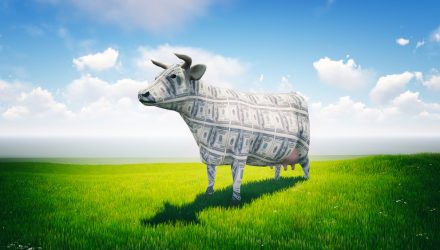An exchange traded fund strategy that focuses on cash cows can function as the core foundation for any investment portfolio.
In the recent webcast, Why Now is the Time to Focus on Cash Flow and High Free Cash Flow Yield, Sean O’Hara, president of Pacer ETFs, argued that the way many investors traditionally categorize the value style might need to be revamped. Specifically, the price-to-book ratio remains a key input to all major value indexes that value investors rely upon. O’Hara noted that from 1960 to 1989, the cheapest 20% of stocks based on P/B significantly outperformed the most expensive 20%. However, from 1990 through 2020, the relative performance of the cheapest P/B stocks was much more muted. More recently, the P/B has ceased to be as effective as the economy shifts toward intangible investments that are not captured.
The old metrics of defining company values are less pertinent in today’s market environment, where more emphasis is placed on intangible assets. Consequently, O’Hara contended that traditional book value makes less sense in an economy driven by intangibles such as patents, licensing agreements, proprietary data, brand value, and network effects.
“Now, companies’ value and ability to generate free cash flow mostly is a result of their intangible assets,” O’Hara said.
“What is more valuable to a company like Google? The physical buildings and the network servers inside of them, or the intangible algorithms running on those servers?” he asked.
Traditional book value (assets minus liabilities) ignores many of the most important resources to companies today. Market leaders now generate cash flows in ways not easily recognized by conventional valuation metrics.
Rather than assuming that value investing might not work, it may simply be that the most frequently used measure of value has become less relevant in a changed world, O’Hara explained. While book value or other accrual-based accounting measures may still be useful in comparing companies engaged in physical activities, they are less meaningful for the increasing number of companies engaged in intangible activities.
Alternatively, O’Hara believes that measures of free cash generation will likely provide a truer valuation comparison between firms. More free cash flow is tied to the intangible assets. Using free cash flow yield to measure a company’s sustainability may produce potentially higher returns and more attractive upside/downside capture over time.
Investors interested in the free cash flow metric now have several ETF options to choose from. For instance, the Pacer Global Cash Cows Dividend ETF (NYSEArca: GCOW), the Pacer US Cash Cows 100 ETF (NYSEArca: COWZ), the Pacer US Small Cap Cash Cows 100 ETF (BATS: CALF), the Pacer Developed Markets International Cash Cows 100 ETF (BATS: ICOW), the Pacer Emerging Markets Cash Cows 100 ETF (NasdaqGM: ECOW), the Pacer US Cash Cows Growth ETF (BUL), and the Pacer Cash Cows Fund of Funds ETF (HERD) all implement free cash flow yield screens to narrow their investing universes.
Focusing on companies with steady free cash flow can be a better approach to security selection than alternatives. Free cash flow is the cash left over after a company has paid expenses, interest, taxes, and long-term investments. It is used to buy back stocks, pay dividends, or participate in mergers and acquisitions. The ability to generate a high free cash flow yield indicates that a company is producing more cash than it needs to run the business, which can then be invested in growth opportunities.
Free cash flow companies generally have three defining characteristics — they are productive, reliable, and self-sufficient. The companies generate more cash flow than they spend, which allows them to grow without external financing. The free cash flow is a sturdy measure of profitability, which is, unlike earnings, not subject to manipulation and accounting assumptions. Lastly, as the companies rely less on capital markets for financing, they don’t dilute their issued company stocks.
Furthermore, O’Hara noted that companies with high free cash flow yields tend to outperform the market during periods of rising interest rates, such as the type of environment we find ourselves in today.
Financial advisors who are interested in learning more about cash cow companies can watch the webcast here on demand.
